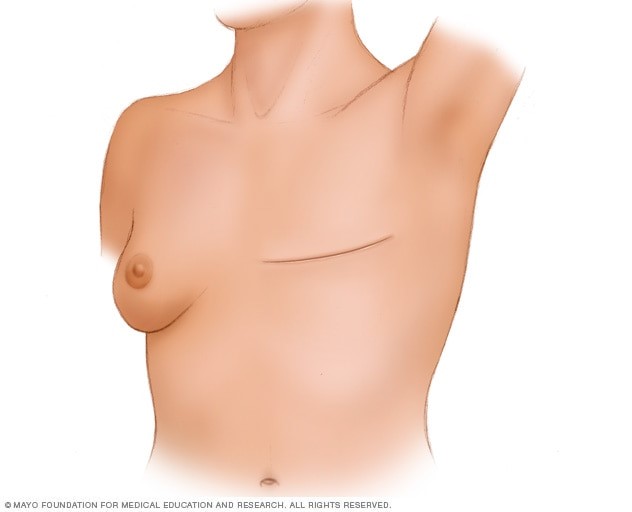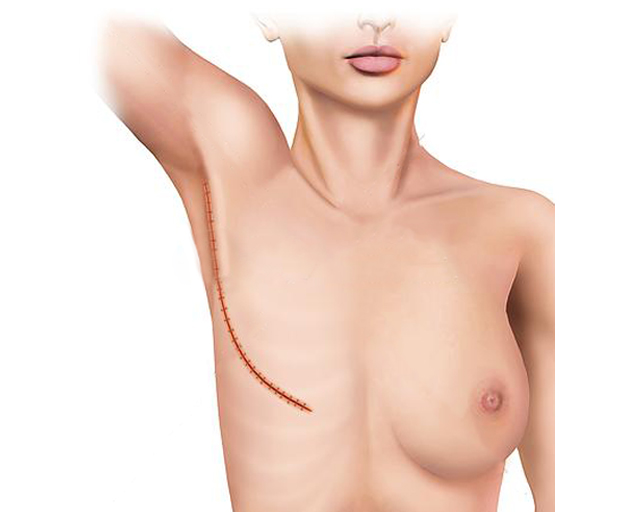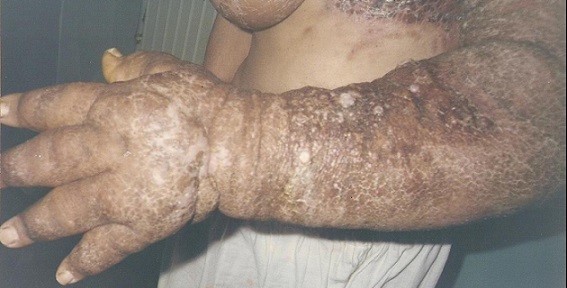Surgery for Breast Cancer
Most women with breast cancer have some type of surgery as part of their treatment. There are different types of breast surgery, and it may be done for different reasons, depending on the situation. For example, surgery may be done to :
During breast reconstruction, the surgeon may use synthetic implants or tissue flaps from another part of your body to create a breast.
- Remove as much of the cancer as possible (breast-conserving surgery or mastectomy).
- Find out whether the cancer has spread to the lymph nodes under the arm (sentinel lymph node biopsy or axillary lymph node dissection).
- Restore the breast’s shape after the cancer is removed (breast reconstruction).
- Relieve symptoms of advanced cancer.
It is important to know your options so you can talk about them with your doctor and make the choice that is right for you.
There are two main types of surgery to remove breast cancer:
- Breast-conserving surgery ( lumpectomy or segmental mastectomy ).
- Mastectomy A surgery in which the entire breast is removed, including all of the breast tissue and sometimes other nearby tissues.
There are several different types of mastectomies. Some women may also get a double mastectomy, in which both breasts are removed.
Mastectomy
Mastectomy is the removal of the whole breast.
A simple Mastectomy (left) removes the breast tissue, nipple, areola and skin but not all the lymph nodes of the axilla(armpit/underarm).
Radical mastectomy is a surgical procedure involving the removal of breast, underlying chest muscle and lymph nodes of the axilla as a treatment for breast cancer.
modified radical mastectomy removes the entire breast — including the breast tissue, skin, areola and nipple — and most of the underarm (axillary) lymph nodes.
Breast conserving therapy (BCT) refers to breast conserving surgery (lumpectomy) followed by moderate-dose radiation therapym (RT) to eradicate any microscopic residual disease. It is an alternative to mastectomy for patients with early breast cancer.
Breast-conserving surgery (BCS) is a less radical cancer surgery than mastectomy.
Breast-conserving surgery, as in a lumpectomy removes part of the breast tissue during surgery, as opposed to the entire breast.
Lumpectomy is surgery to remove cancer or other abnormal tissue from your breast. Lumpectomy is also called breast-conserving surgery because unlike a mastectomy only a portion of the breast is removed.
Oncoplastic surgery combines the latest plastic surgery techniques with breast surgical oncology. When a large lumpectomy is required that will leave the breast distorted, the remaining tissue is sculpted to realign the nipple and areola and restore a natural appearance to the breast shape
Surgical management of breast cancer has evolved considerably over the last two decades. There has been a major shift toward less-invasive local treatments, from radical mastectomy to breast-conserving therapy (BCT) and oncoplastic breast surgery (OBS).
Type of mastectomy depends on
- Age
- General health
- Menopause status
- Tumor size
- Tumor stage (how far it's spread)
- Tumor grade (its aggressiveness)
- Tumor's hormone receptor status
- Whether or not lymph nodes are involved

 Complications of Surgery
Complications of Surgery
These may be immediate, early and delayed. However since this website focuses on laser for breast cancer all the complications will not be discussed. For details about complications and their management you may speak to your surgeon.
The complications listed here are the ones which are ones which cause concern to patient or their relatives. Incidentally they are the reason for higher incidence of depression among patients.
- Reduced ROM (range of movement) of shoulder
- Seroma/collection of fluid around operated area
- Numbness
- Postural changes
- Chronic Phantom pain
- Psychological implications like body shaming, body image issues, fear of rejection
- Lymphoedema

- Lymphangiosarcoma (Stewart-Treve’s Syndrome)

May develop in some cases of long standing lymhedema Complications of Breast Implants
- Pain
- Implant exposure and rupture
- Infection
- Displacement
- Extrusion
- Capsular contraction
- Unsightly donor area on back
All these complications cause an extremely negative attitude in the body towards themselves and people around them
According to known statistics upto 50% of patients have severe depression which causes relationship issues with spouses and families leading to mental/physical separation form their partner. Surgery for breast cancer is the leading cause of separation/divorce in these patients.
